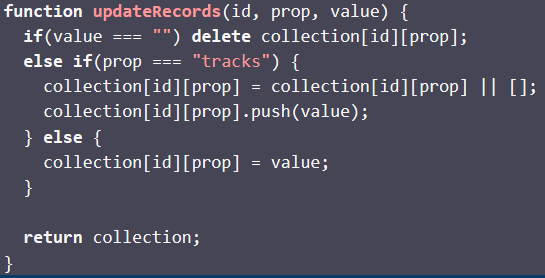How to Access Object Properties in JavaScript

JavaScript is a powerful, versatile programming language widely used in web development. One of its fundamental features is its ability to work with objects. Objects are collections of properties, and understanding how to access these properties is crucial for effective JavaScript programming. In this article, we will explore various methods and techniques for accessing object properties in JavaScript, ranging from the basics to more advanced approaches.
1. Introduction to JavaScript Objects
In JavaScript, an object is a standalone entity, with properties and types. It’s similar to real-life objects, such as a car or a book, which have attributes like color, make, and year. In JavaScript, objects are key-value pairs, where the key is a string (or symbol) and the value can be any data type, including other objects or functions.
Example of a JavaScript Object
const car = {
make: 'Toyota',
model: 'Corolla',
year: 2020,
startEngine: function() {
console.log('Engine started');
}
};
In the car object above, make, model, and year are properties, and startEngine is a method (a function defined as a property).
2. Accessing Object Properties
There are two primary ways to access object properties in JavaScript: dot notation and bracket notation. Let’s explore both methods in detail.
2.1 Dot Notation
Dot notation is the most straightforward way to access object properties. It involves using the dot (.) operator followed by the property name.
Syntax
object.property
Example
const car = {
make: 'Toyota',
model: 'Corolla',
year: 2020
};console.log(car.make); // Output: Toyota
console.log(car.model); // Output: Corolla
console.log(car.year); // Output: 2020
In the example above, we access the make, model, and year properties of the car object using dot notation.
2.2 Bracket Notation
Bracket notation provides a way to access properties using a string or a variable. This method is useful when property names are dynamic or not valid identifiers.
Syntax
object['property']
Example
const car = {
make: 'Toyota',
model: 'Corolla',
year: 2020
};console.log(car['make']); // Output: Toyota
console.log(car['model']); // Output: Corolla
console.log(car['year']); // Output: 2020
In the example above, we use bracket notation to access the properties of the car object. This method allows us to use property names that are not valid JavaScript identifiers or are stored in variables.
2.3 Accessing Properties with Variables
Bracket notation is particularly useful when property names are dynamic or stored in variables.
Example
const car = {
make: 'Toyota',
model: 'Corolla',
year: 2020
};const propertyName = 'model';
console.log(car[propertyName]); // Output: Corolla
In this example, propertyName holds the name of the property we want to access. Using bracket notation, we can dynamically retrieve the value associated with this property.
3. Property Access with Computed Property Names
In ES6 (ECMAScript 2015) and later versions, JavaScript introduced computed property names, allowing you to use expressions inside object literals to define property names.
Syntax
const obj = {
[expression]: value
};
Example
const propName = 'year';
const car = {
make: 'Toyota',
model: 'Corolla',
[propName]: 2020
};console.log(car.year); // Output: 2020
In this example, the [propName] syntax dynamically sets the property name to the value of the propName variable.
4. Accessing Nested Properties
Objects can contain other objects, creating a nested structure. To access properties within nested objects, you can use dot notation or bracket notation.
Example
const car = {
make: 'Toyota',
model: 'Corolla',
details: {
year: 2020,
color: 'blue'
}
};console.log(car.details.year); // Output: 2020
console.log(car['details']['color']); // Output: blue
In the example above, details is a nested object within car. We access its properties using dot notation and bracket notation.
5. Accessing Properties with Optional Chaining
ES2020 introduced optional chaining, a feature that allows you to safely access deeply nested properties without having to check if each reference in the chain is valid.
Syntax
object?.property
Example
const car = {
make: 'Toyota',
model: 'Corolla',
details: {
year: 2020
}
};console.log(car.details?.year); // Output: 2020
console.log(car.details?.color); // Output: undefined
In this example, car.details?.color returns undefined instead of throwing an error if details does not have a color property.
6. Accessing Properties with Destructuring
Destructuring is a syntax introduced in ES6 that allows you to extract values from objects into distinct variables.
Syntax
const { property1, property2 } = object;
Example
const car = {
make: 'Toyota',
model: 'Corolla',
year: 2020
};const { make, model } = car;
console.log(make); // Output: Toyota
console.log(model); // Output: Corolla
In this example, make and model are extracted from the car object into separate variables.
7. Accessing Properties with Object.keys(), Object.values(), and Object.entries()
JavaScript provides several methods to interact with object properties: Object.keys(), Object.values(), and Object.entries().
7.1 Object.keys()
Returns an array of an object’s own enumerable property names.
Example
const car = {
make: 'Toyota',
model: 'Corolla',
year: 2020
};const keys = Object.keys(car);
console.log(keys); // Output: ['make', 'model', 'year']
7.2 Object.values()
Returns an array of an object’s own enumerable property values.
Example
const car = {
make: 'Toyota',
model: 'Corolla',
year: 2020
};const values = Object.values(car);
console.log(values); // Output: ['Toyota', 'Corolla', 2020]
7.3 Object.entries()
Returns an array of an object’s own enumerable string-keyed property [key, value] pairs.
Example
const car = {
make: 'Toyota',
model: 'Corolla',
year: 2020
};const entries = Object.entries(car);
console.log(entries); // Output: [['make', 'Toyota'], ['model', 'Corolla'], ['year', 2020]]
8. Handling Undefined Properties
When accessing properties that may not exist, it’s essential to handle undefined values gracefully. Accessing a non-existent property returns undefined.
Example
const car = {
make: 'Toyota',
model: 'Corolla'
};console.log(car.year); // Output: undefined
To provide default values, you can use logical OR (||) or nullish coalescing (??).
Example with Logical OR
const car = {
make: 'Toyota',
model: 'Corolla'
};const year = car.year || 'Unknown';
console.log(year); // Output: Unknown
Example with Nullish Coalescing
const car = {
make: 'Toyota',
model: 'Corolla'
};const year = car.year ?? 'Unknown';
console.log(year); // Output: Unknown
9. Summary
Accessing object properties in JavaScript is a fundamental skill that can be accomplished using various methods such as dot notation, bracket notation, computed property names, optional chaining, and destructuring. JavaScript also offers methods like Object.keys(), Object.values(), and Object.entries() to interact with object properties effectively.
By mastering these techniques, you can manipulate and interact with JavaScript objects in a more powerful and flexible manner, enabling you to build more complex and dynamic applications.







